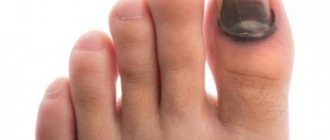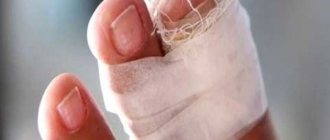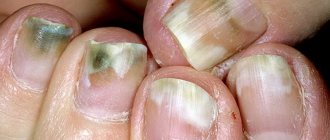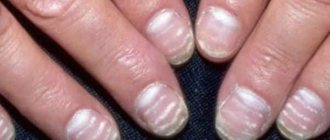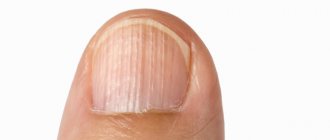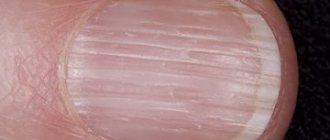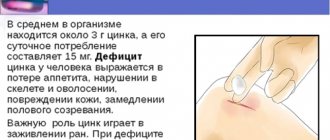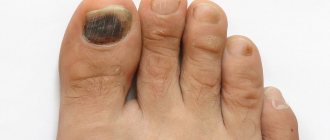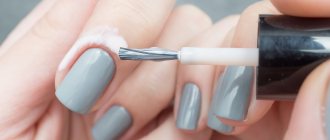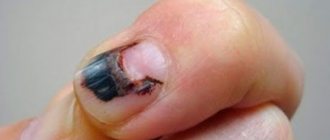Causes of the disease
While other types of melanoma are often associated with excessive sun exposure, here the situation is radically different. Most often, this type of oncology develops on the toes, which are constantly protected from sunlight. Therefore, the causes of subungual melanoma do not include insolation, they look like this:
- mechanical injuries of the nail. This includes surgical and cosmetic intervention options in which the nail plate is damaged;
- physical injuries: burns, frostbite, etc.;
- chemical injuries. Usually we are talking about long-term exposure to aggressive chemicals, for example, in production;
- heredity. Up to 14% of all patients diagnosed with nail melanoma have mutations in certain genes4
- existing benign neoplasms, for example, dysplastic nevi, which are prone to transformation into malignant ones.
Most often, this disease occurs in people over 60 years of age. And there is another interesting fact: obviously, it depends on the race, because representatives of the Negroid, as well as Mongoloid races, suffer from the disease much more often - 40% more often than Caucasians. Among the latter, people at risk are fair-skinned, red-haired people, as well as people with a lot of freckles.
The appearance of a black area and spots on the nails of the hands and toes: causes
Such a phenomenon as a black spot, which can appear under a transparent nail plate, is a fairly common occurrence. Moreover, almost every person with different hygiene habits and lifestyle can encounter it at least once in their life.
The reasons for this can be various cases: illness, injury. Such a spot can appear on both the fingers and toes. Of course, most often, this is how the fungus manifests itself, but you shouldn’t make hasty conclusions, because it can also appear in completely healthy people who have no complaints.
There are four main reasons that contribute to the appearance of an unpleasant stain on the nail:
- Presence of any fungus (disease)
- Predisposition or increased pigmentation
- Trauma to a finger or nail plate, resulting in a hematoma
- Liver problems and diseases in humans
Each individual case should be considered:
- Hematomas. This is probably the most common cause of stains on the nail. A hematoma is a bruise, simply put. At the site of the impact, blood accumulates, which is located in the soft tissues; it darkens over time and appears under the nail plate itself. This is easy to understand if you know how the nail itself is built. After all, under the plate itself there is quite soft tissue - the nail bed. These two tissues (skin and nail) are very closely related to each other. Upon impact, the capillary network of soft tissue is damaged. The vessels burst and hemorrhage occurs in the tissue. Such a spot does not have clear boundaries and its size depends only on the force of the impact. The blood darkens, acquiring a bluish, purple and black tint. Such a stain can disappear over time. It is often quite painful and produces unpleasant sensations when pressed.
- Increased pigmentation. This is not a common predisposition, but it does occur in some people. The reasons for this tendency to stains can be the consumption of poor quality water and food, direct ultraviolet rays, and even regular human work in harmful conditions. A characteristic feature of this predisposition is the periodic appearance and disappearance of dots. This happens because the blood pigment changes regularly. There is absolutely nothing scary about this, so you shouldn’t scare yourself about it. It is necessary to adjust your diet and lead a healthy lifestyle.
You should pay attention to such points only if they appear very often, do not disappear and have a very large-scale localization, that is, there are a lot of them. Such points may well have an oncological basis and be a symptom of cancer. If you have such concerns, consult your doctor for advice.
suspicious black dots on the nails may indicate the presence of cancer in the human body
- Liver problems and diseases. Such darkening of the nail plate can often indicate liver dysfunction. This happens because the organ ceases to cope with its duties, that is, it cannot cope with the processing of toxins. This is why dark and black spots appear on the nail plate in places. As a rule, such spots are usually blurry and do not have clear boundaries and sizes. They may appear and disappear periodically. In this case, you should seek help from a therapist who will prescribe tests for you. In no case should you postpone a visit to the doctor if, in addition to spots, you also notice pain in the liver area
- Fungus. The fungus often affects the nail plate of both the hands and feet. In this case, the nail can not only have black spots, but also completely change the color of its plate and become yellow, orange and even brown. Another characteristic sign of fungus is thickening of the nail plate and the appearance of unusual vertical stripes on the nail. It is important to know that after the nail is damaged, the soft tissues also begin to suffer. In this case, treatment should be started immediately as quickly as possible. Before choosing a medicine, consult a dermatologist if possible. He can order you an important series of tests, the results of which will determine your problems and help you choose effective treatment.
Thus, two main reasons can be distinguished for the appearance of black spots on the nail - external (impacts and tissue damage) and internal (diseases of organs and tissues).
black spots on the nail plate, on the toe
Types and symptoms
The classification of nail melanoma provides for two variants of the course of the disease: horizontal and vertical stages. Symptoms of the disease will depend on what type we are talking about.
In the horizontal stage, the patient observes a brown or black stripe on the nail (under the plate). The strip is not necessarily uniform; it can expand, capture more of the free nail edge, and transfer to the skin.
During the vertical stage, the tumor begins to grow into the surrounding tissues, deformation of the nail occurs, and it becomes fragile. As the tumor grows, the nail cracks, the surface becomes covered with bumps, and at the slightest mechanical impact it begins to bleed. The pigment in this case can also be either brown or black.
It is important to understand that nail melanoma can be non-pigmented until a serious stage. For this reason, until the tumor begins to spread vertically, it may not be noticed. This is typical for approximately 30% of cases.
Not always, but the disease can also manifest itself with the following symptoms:
- burning, itching in the area of the tumor;
- feeling of fullness;
- pain that increases as the tumor develops;
- decreased functionality of the limb.
Common symptoms on the toenail or fingernail include fever, weakness, and severe weight loss. With the development of metastases, local symptoms are added - those that are characteristic of diseases of the affected organs.
Are you experiencing symptoms of nail melanoma?
Only a doctor can accurately diagnose the disease. Don't delay your consultation - call
Why did tight shoes turn my toe black?
If the nail turns black not from internal reasons, that is, problems with the health of internal organs, then from external ones. The nail can also turn black due to impaired blood circulation. This can happen when a person wears shoes that are too tight or uncomfortable. As a result, the finger is slightly injured and turns blue due to hemorrhage.
After the cyanosis goes away, the blood coagulates and it is for this reason that blackness appears under the nails. If the resulting hematoma is not too large in size, then it does not require any intervention and can resolve on its own over time. If the spot is large enough and occupies the entire nail plate, this means that blood circulation in the damaged vessels on the finger is completely disrupted.
Most often, this process ends with the rejection of the broken, damaged nail. After the diseased nail is rejected, a whole healthy plate should grow back.
To alleviate your condition and allow the nail to recover, you need to provide comfort to your finger. Avoid shoes that are too narrow and uncomfortable. Shoes should not be narrow, not tight, and should not rub. It is advisable that shoes be made from natural and high-quality materials.
You should also be careful about your lifestyle: avoid traumatic situations, do not engage in active sports during the healing period of the finger, eat healthy food that contains a sufficient amount of calcium.
Stages of the disease
The classification of nail melanoma involves (like any other cancer) several stages:
- zero (in situ). At this stage, non-invasive damage by malignant cells is detected;
- first. The thickness of the formation is either up to 1 millimeter or up to 2, but without ulceration;
- second. It is placed if the thickness of the tumor is no more than 2 millimeters or no more than 4, but without ulceration;
- third. It is placed regardless of the size of the melanoma itself, provided that metastases are detected in the regional lymph nodes;
- fourth. Suggests the presence of metastases in internal organs.
Obviously, the lower the stage, the higher the patient’s chances of effective treatment and longer life expectancy.
Principles of treatment
Therapy for emptiness under the nail is complex and includes:
- taking antifungal drugs;
- treating the plate with ointments;
- strengthening immune defense;
- restoration of the affected part of the nail.
Therapeutic methods
Treatment of the disease is lengthy and requires the use of several types of medications:
- The oral use of systemic drugs such as Fluconazole or Griseofulvin is mandatory. Taking the pills takes from 3 to 6 months.
- Local treatment with creams and ointments. These medications can be applied as a compress at night. Before each procedure, take a bath with sea salt and lightly file the affected nail.
- The use of antifungal varnishes can eliminate unpleasant symptoms, as well as protect unaffected areas of the plate from further spread of the pathogen.
ethnoscience
Unconventional treatment is suitable for people who have allergic reactions or hypersensitivity to medications.
Baths
The water for the procedure should not be too hot. The duration of the bath is 15-20 minutes.
- With iodine. Heat vegetable oil and add a few drops of iodine and vitamin A. This method will help strengthen and improve the condition of the nail.
- A sea salt bath requires an ingredient without fragrances or dyes. Dissolve 1 tbsp in two glasses of warm water. l. salt and pour into a bowl.
- Mix and heat two tablespoons of olive oil and honey in a mug, add a chicken egg and dip the affected nail into the mixture. After the procedure, wash your foot and lubricate it with cream.
- Treatment with beeswax should be carried out at least twice a week to obtain a positive result.
Decoction with chamomile and green tea
Add chamomile and tea flowers in equal proportions to a glass of boiling water and boil for several minutes. After the resulting infusion has cooled, keep the affected finger in it for no more than 20 minutes. The product can be used within three days. Before the procedure, warm up the broth.
Diagnostics
Diagnosing melanoma under the nail is not so easy, because it is often similar to other diseases or problems, for example, subungual hematomas. To exclude simpler situations and make an accurate diagnosis, doctors use dermatoscopy (examination of tissue under high magnification), as well as epiluminescence microscopy. The latter method involves examining changed areas of tissue in a special environment. Thanks to it, it is possible to distinguish a benign disease from a malignant one.
Cytological studies are carried out, but a biopsy in this case is undesirable, since it can provoke the development of metastases. Additional tissue examination is carried out after surgery, when the tissues are removed.
If nail melanoma is not excluded after examination, marginal resection of the nail is performed followed by tissue examination. When the diagnosis is confirmed, the patient is indicated for radical surgery.
Additionally, the following research methods are used:
- Ultrasound;
- CT;
- MRI.
They are needed to verify the presence or absence of metastases.
Why does the nail turn black in diabetes?
Diabetes mellitus is a disease that can affect the integrity and health of nails, both on the hands and feet. Why is this happening? Most often, the plates on the lower extremities are damaged due to the fact that blood circulation in the body and in the legs, in particular, is impaired. This can also happen when infected with a fungus. The fungus, which can be present on the nails of a healthy person for any reason, does not spread as quickly as on the nails of a person with any form of diabetes. Also, microbes, which are the main causes of fungal disease, can very actively spread throughout the entire foot of a diabetic and to soft tissues in particular.
It is not difficult to recognize and distinguish the fungus - the nail plate not only changes its color and turns black, the nail becomes thicker and denser. Often it starts to flake.
The fungus often affects the nails of people with diabetes because their metabolism is impaired. Diabetics are also distinguished by the fact that, along with the fluid, their sweat glands secrete glucose, which is very favorable for the development of fungus.
how diabetes can affect diseases associated with blackening of the nail plates
Another problem for people with diabetes is frequent ingrowth of nail plates into soft skin tissue. Such a nuisance occurs for the same reason - impaired circulation in the body and outflow of blood in the legs. Inconvenient, non-compliant shoes significantly aggravate the situation, allowing this process to happen faster. As a result, the finger swells, turns red and a hematoma forms.
In this case, you should definitely seek help from a doctor. If ignored and left untreated, the ingrown toenail will cause soft tissue infection and allow the toe to fester. In the worst case scenario, the plate or even the affected finger will need to be removed. This phenomenon is called “diabetic foot” syndrome.
How the treatment works, methods
The main treatments for melanoma under the nail include:
- resection at the level of the middle phalanx of the finger. The formation is removed in such a way as to preserve the patient’s quality of life as much as possible;
- radiation therapy. It is carried out to exclude tumor recurrence in the area of surgical scars, as well as to influence the primary lymph nodes to prevent the development of metastases;
- chemotherapy. Depending on the situation, it can be used before surgery and after surgery. There are different program options that are selected individually;
- immunotherapy. The use of certain drugs prolongs the period without recurrence and increases the overall survival of patients with this type of cancer.
It is assumed that gene therapy can also play a positive role in treatment.
What to do if the toenail turns black, how to treat it?
Most often, after an injury, the fingernail or toenail turns black. It is not always possible to see a doctor on time. For this reason, you should definitely know the therapy that you can do for yourself:
- If your finger is injured, give it rest, stop moving it or walking if it is on your leg
- Raise your leg above your head to ensure normal blood circulation
- Until the finger gets rid of blackness and pain, you should provide it with loose shoes
- Apply a soft bandage to your finger to protect it from repeated injury. Use a bandage or adhesive tape
- Try not to handle the affected finger, especially if your household activities involve water or chemicals (wear gloves)
- Immediately after you receive a bruise, it is recommended to treat the nail and apply ricinol emulsion to it, which can stop bleeding and slow down the inflammatory process, accelerating the regeneration of soft tissues
- A few days after the injury, choose an anti-inflammatory ointment for your nail and finger for faster healing (arnica or heparin ointment). The medicine should be applied three times a day
- In order to relieve swelling of the finger and eliminate severe pain, you should apply a compress with dimexide to the bruised nail and finger. The compress should be done daily, preferably before bed, leaving the soaked gauze on the sore spot for at least half an hour
The most common thing - badyaga - will help you cope with the blackness under the nail and eliminate the pain. You can buy it at a pharmacy for a reasonable price. It is sold in powder form, which is diluted with water. The resulting mass is applied to the sore spot. If you do not have the opportunity to see a doctor, regularly lubricate the nail with bodyagu and gradually cut off the affected nail with scissors as it grows back.
You should understand that you should never tear off your nail - this can disrupt the natural rejection process and lead to infection. Tearing off part of the nail prevents the renewal of the entire nail plate.
Pay attention to how your finger perceives the treatment. If the inflammation does not decrease, but on the contrary becomes larger, the finger and the area around the nail turns red - the situation may worsen. It is quite possible to get purulent inflammation. In this case, you should stop any treatment and seek help from a specialist in the hospital.
Complications and prognosis
With the development of nail melanoma, the risk of metastases is very high. As a rule, they appear in the liver and lungs. However, resection does not protect 100% from these processes.
Another difficulty is that surgery always (but to varying degrees) reduces the functionality of the limb. Patients also experience psychological difficulties, since their lifestyle changes, and in the case of hand operations, difficulties arise with the perception of their new appearance, which is difficult to hide from others.
In the absence of metastases, the five-year survival rate of patients is about 60%, but if metastases are already present, the average survival rate ranges from 7-8 months. The specific timing depends on individual characteristics, as well as the size, thickness of the tumor and other factors.
Blackened nails on the big toes and on the hands of men and women, reasons
The most common cause of a blackened nail is hemorrhage under the nail plate, which occurs as a result of a finger injury.
The most common injury is the big toe. It is quite active and differs from others in its size. In this case, if there is a bruise and hemorrhage, pain may be observed over the next two weeks when walking, putting on shoes, or pressing on a finger. Pain may accompany the finger until the damaged nerve endings reach complete death.
Pay attention to the nail after two weeks. If the pain does not go away, and the finger has increased in size (swelling), you should immediately consult a doctor.
The cause of blackening of a large nail (like any other) can be microsis. Microsis is a disease that is easy to catch in public places where you have bare hands contact with the floor, handrails, and benches. For example: bathhouse, sauna, public shower, toilet, locker room, and so on. In such places, a person with a disease leaves it on the surface, where it is picked up by a healthy person. Unfortunately, it is almost impossible to cure microsis on your own, because in order to determine the cause of the fungus, you need to undergo many tests.
Myrosis of the nail plate on the big toe
Other reasons for changes in the color of the nail plate:
- A black nail that has a slightly greenish tint is often a symptom of an abnormal and unhealthy gastrointestinal tract.
- A black nail with a slight bluish tint indicates that a person has problems with blood circulation
- A black nail with brown and burgundy shades may indicate disorders of the central nervous system and problems with the brain.
Another common cause of blackened nails on both the fingers and toes is hemangioma.
Hemangioma is a disease that causes the growth and subsequent darkening of blood vessels in the soft tissues under the nail plate. In addition, it causes unbearable and very noticeable pain. In some cases, it appears even before the nail turns black. Hemangioma is a kind of tumor under the nail, which can also be felt by pressing. If the dark color of the nail plate turns white, this is a clear symptom of the presence of a neoplasm.
nail hemangioma: A - dark stripe, B - dark spot
Pay attention to how you feel. If, in addition to pain, you regularly feel discomfort, this is a signal that there is strong pressure under the nail. In such situations, you cannot do without the help of doctors. The doctor will recommend removing the nail plate and only then performing a series of treatment procedures. If the nail is removed, you can perform all the necessary manipulations, get rid of the tumor and eliminate the pain. As a result, the dead nail is replaced by a new healthy one.
Not only drug treatment, but also a healthy diet, as well as regular salt baths will help speed up the healing process.
Disease prevention
Prevention of subungual melanoma can include:
- protection of fingernails and toenails from physical and chemical injuries, exposure to aggressive chemicals;
- additional examinations of those people who have had cases of melanoma among their close relatives;
- monitoring existing benign neoplasms (nevi) and their timely removal.
Also, do not ignore the primary signs of melanoma of the nail plate. In many cases, they talk about other, simpler symptoms or diseases, but you shouldn’t count on it.
Prevention
It is better to prevent darkening than to treat it. Simple preventive measures will help minimize risks.
- You should not wear someone else's shoes, even if they belong to your closest relatives.
- It is necessary to observe the rules of personal hygiene, regularly wash your feet, and wear clean shoes and socks.
- Choose a pedicurist carefully.
- Remove shoes from the house that cause discomfort when walking in them.
- Drink vitamin complexes regularly.
- When visiting saunas, baths, and swimming pools, you must only wear personal rubber slippers.
Possible complications
Simple nail injuries resolve without additional treatment. If the cause of the blackening of the nail is serious disorders, then without medical help complications are possible.
- With severe bruises, open wounds may form, which are a source of proliferation of pathogenic bacteria. Wounds may appear after the nail peels off. When it enters the bloodstream, the infection spreads through the vascular system, causing inflammatory processes. In addition to hematoma, bruises can be accompanied by dislocations or fractures.
- A fungal infection left unattended is dangerous because without treatment, fungal spores actively multiply and are easily transmitted to other people if hygiene rules are not followed. If left untreated, pathogenic bacteria affect internal organs and penetrate bone tissue. It is very difficult to get rid of the fungus, but once treatment begins, it is necessary to destroy all lesions. Otherwise, the relapse will repeat.
- Blackening of nails caused by systemic chronic diseases is a signal for urgent consultation with a doctor. A timely diagnosis facilitates the treatment process and speeds up recovery.
- A benign nail tumor without medical intervention can cause skin cancer.
Blackened nails are a pronounced defect that many try to disguise so that it is not noticeable. Paying close attention to your own health will help preserve the beauty of your hands and feet. At the slightest change in nail color, you need to quickly determine the cause and begin treatment.
Author: Vishnevskaya Galina
Article design: Mila Friedan
Causes of onycholysis: why did the void form under the nail?
It is always important to know the cause of a particular disease in order to get rid of them and recover faster. Why is there a void under the nail? Experts identify a number of reasons for the appearance of onycholysis:
- Mechanical and traumatic
- Physical
- Infectious
- Inflammatory processes
- Allergic
Timely detection of the underlying cause is the main path to a doctor making an accurate diagnosis, prescribing the necessary medications and further rapid recovery. During the period of illness, a combination of unhealthy factors may be present, and in this case it is necessary to identify the main one in order to promptly stop all its irritating processes.
Here is a description of the most common factors that can cause such a defect:
- Experts consider the most common cause of nail detachment and voids to be mechanical damage . Deformation of part of the plate occurs when there is a strong blow to the phalanx of the finger, compression - as a result of which a hemorrhage forms under the nail surface.
- Also, a change defect occurs when ingested by chemicals , the use of detergents and cleaning products, or burns.
- The occurrence of disease processes is facilitated by exposure to ultraviolet radiation and changes in high and low temperatures.
- Detachment of the nail plate can be caused by prolonged exposure to water.
- Narrow, uncomfortable shoes made of synthetic materials force the foot to constantly be in a compressed state, sweat a lot, and in the future this leads to deformation of the nail plate.
- Excess weight puts unnecessary stress on the lower limbs, which leads to the onset of disease.
- Visiting a manicure studio and undergoing a cosmetic nail procedure can also serve as a basis for the development of onycholysis. In this case, the problem is the use of low-quality materials and insufficient sterilization of instruments. may peel off after gel polish .
- Dermatological diseases such as eczema, psoriasis, dermatitis, fungal infections lead to the appearance of onycholysis. With this option, the disease is complemented by the appearance of thickening and peeling of the skin around the nail and cuticle.
- Infectious inflammatory processes within the body, diseases of the endocrine, digestive system, blood vessels, and heart can have a negative impact.
- Due to prolonged use of antibiotics , constant stress, and lack of vital microelements, they contribute to the occurrence of onycholysis.
A rare cause of the disease is allergies . In this case, the development of the disease is associated with constant and prolonged contact with a substance that causes an allergic reaction - for example, latex, detergents. For more information about allergies to gel polish and other substances, read this article on our website .
It is worth understanding: Covering the nail with decorative varnish is possible, but this does not solve the problem. If even minor voids appear, it is necessary to contact a specialist to identify the cause of the disease and further treat it.
If you ignore the signs, there is a possibility of completely losing the nail.
